Identifying Beneficial Insects and Garden Insect Pests
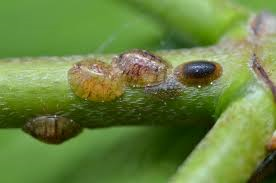
One of the many challenges that many homeowners and gardeners face is dealing with pests that not only invade but destroy our gardens. There is nothing more hurtful than laboring so hard to establish your dream garden by devoting weekend after weekend to give your yard a total makeover and in the midst of all that joy and excitement disaster strikes.
All of that hard work seems to be headed down the drain. Your lovely garden that was once the talk of the neighborhood is now nothing more than a thing of the past. Though all may seem hopeless, the good news is there is still a chance for recovery in the midst of your frustration.
Understanding Pests
One of the keys to pest control is to understand the conditions that cause them to thrive along with their life cycle. Garden insect is divided into two categories, In the two groups we have good bugs and then theirs is the bad bugs.
It is said that for every human being upon planet earth there are about a million or more bugs. So as you can see, the insect world outnumbers us, humans.
It is also a proven fact that the majority of bugs are good bugs so we see that the probability of us losing the battle with the right knowledge and care is very slim. In actuality, it is this small number of bad bugs that does all the damage to our vegetable garden, our herb garden, our fruit trees, our landscape, and even our interior plants.
So in this article, we will be looking at ways to destroy these pests that seek to become a menace to our landscapes and gardens. Research has also shown that we can not totally get rid of all those bad bugs, but what we can do is to keep them at an acceptable level where they will no longer be a threat by decreasing their population, the process of which the good bugs are used to control the bad bugs is called BIOLOGICAL CONTROL.
Biological control is an environmentally safe way to keep the bad bugs under control.
Good Bugs
Now let’s begin our research with some of the good guys.
First of all, what is the purpose of these good bugs and how do they help us?
Well, the good news is that the good bugs feed on the bad bugs. They do not feed on our plants only on the bad bugs. You may have seen some of them in your garden but did not know what they were and mistook them for the bad bugs. Talk about the mistaking of an identity!
Can we now have the drum roll as we bring into the spotlight ‘the good guys?
LadyBugs

Let me introduce to you ‘the ladybug’. Ladybugs are not bugs but are actually beetles. There are about 4,000 species of lady beetles worldwide. These beetles can be purchased online or from your local nursery.
As soon as they are delivered you can release them into your garden. The best time to release them is in the evening time so they don’t fly away. Once they are there the females will start laying their eggs which is an added bonus. Lady beetles feed on a whole list of insects including aphids, tomato hornworm, mealy bugs, scales, whitefly, mites, cabbage moth, broccoli worm, and a host of soft body insects
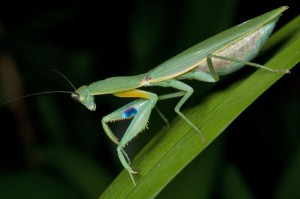
Those bad bugs don’t stand a chance with the praying mantis on the loose. There are about 2,500 species of praying mantis. The praying mantis gets its popular name because of how its two front legs are always bent like they are praying.
The life cycle of the praying mantis consists of three stages: The egg, nymph, and adult stage. These insects can be found mostly in warmer climates.
The majority of these insects can be found in the rainforest. Others can be found in Meadowlands, deserts, and grasslands. The praying mantis can also be purchased online or from your local nursery.
These insects feed on fruit flies, grasshoppers, spiders, whiteflies, moths, crickets, flies, cockroaches, aphids, caterpillars, mosquitoes, beetles, and other soft body insects.
Lacewings
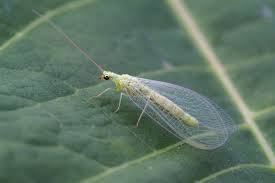
Lacewing insects are another group of insects that you can release into your garden to control bad bugs such as spider mites, caterpillars, citrus mealybugs, aphids, thrips, cottony cushion scales, and other insects. The adult lacewing does not kill other insects but feeds on sweet nectar and pollen.
The lace larva eliminates bad bugs. The adult female lays her eggs on the foliage or leaves then after a few days, the eggs hatch and the larva emerges from the eggs.
Soldier Beetles
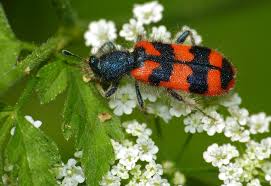
Soldier beetles have a very beautiful color of orange mixed with spots of black. This beetle can be found in your garden feeding on aphids, mealy bugs, caterpillars, whiteflies, and other soft body garden pests but also including sad to say the beneficial insects.
You can check out your local garden nursery for this insect or you can attract them by planting goldenrod or catnip in your garden.
Damsel Bug
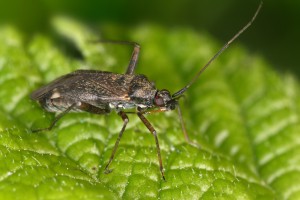
Damsel bugs are another one of the good guys that help to protect our gardens against these outlaw bugs whose only objective is death and destruction. Damsel bugs are a light brownish and white color.
These bugs feed on a host of insects including mealybugs, thrips, leafhoppers, caterpillars, and other soft body insects. They can be collected from alfalfa fields by using a net or you can check your nursery to see if they carry them.
Damsel bugs go through three stages which are egg, nymph, and adult. The eggs are laid in the stem of plants. Damsel bugs eggs hatch soon after they are laid. The nymphs shed their skin several times before entering adulthood.
Assassin bugs
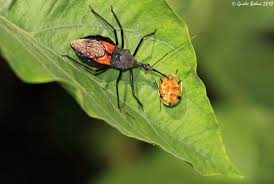
Assassin bugs live up to their names by eliminating the bad bugs. These good guys have no mercy when it comes to the enemy. There are 135 species of assassin bugs worldwide. The male is somewhat large, it has thickened forewings with membranous tips for handling prey. Adults are black, reddish, or brown and have very small eyes. The assassin bug also has long slender legs and a narrow head. The assassin bug uses its needle-like beak to injure its enemy. It then injects a venom that paralyzes its victim. This venom liquefies the internal contents of its prey. The assassin bug then uses its straw-like beak and sucks out the contents.
Their eggs are laid in clusters on plants. When their young or the nymphs hatch they look like the adults except smaller and have no wings.
Big-eyed bugs
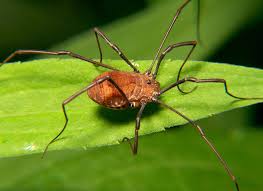
Big-eyed bugs are also beneficial insect that helps us in our war against bad bugs. Big-eyed bugs are small with large googly eyes. Their bodies are dark and oval-shaped with clear wings.
The female lays eggs that look somewhat like rice grains that are whitish-grey with red spots. The egg is laid on plant parts. The eggs hatch in about 5-8 days. The complete life cycle of Big-eyed bugs is 3-4 weeks. From eggs to nymphs and then adults.
Big-eyed bugs feed on aphids, small caterpillars, spider mites, leafhoppers, corn earworms, etc. this bug feeds on a wide range of insects.
Ground beetles
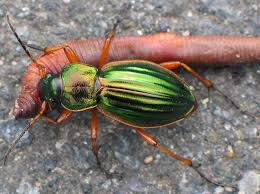
Most ground beetles are small to moderate size although some can become large. These insects have earned their place in the world of insects as they give us a helping hand in protecting our landscape and gardens. These bugs are active at night which means that they are dormant or hide during the day.
They can be found under leaves on the ground, under stones, logs, grassy areas, and loose bark. During certain times of the year, they can be found entering homes and buildings. Please note that they are not harmful and do not present a threat to you or your property. Ground beetles lay their eggs on the surface of the soil and cover them. The eggs hatch in a week’s time. The life cycle of a ground beetle is from egg, larva, pupa, adult.
Ground beetles eat a whole host of things including ants, flies, grasshoppers, living plants, dead plants, and animals whether they are dead or alive.
Honey bees
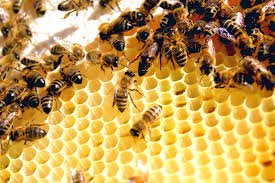
Honey bees are beneficial to humans because of the contribution they make as far as pollinating plants and producing honey that employs people. The Honey industry makes billions of dollars a year by its mass production.
Honey is a favorite of millions around the world, honey can be used as sweeteners to make tea, honey is also used for medical purposes, honey is used in many pastries, baked goods and the list is just endless. Bees are very beneficial in helping us. There are many species of bees worldwide.
Bees are busy insects going about their daily activity each day. Research shows that a colony can have up to 60,000 bees at one time. Bees make their homes in hollow trees, hollow logs, holes in rocks, and so forth.
Inside the beehives are small holes, these holes are known as cells where the young are cared for. The colony consists of the Queen, the drones, and the workers. The Queen as we know is responsible for reproduction, the workers as the name says are responsible for the colony as far as taking care of its functioning needs and lastly, the drone’s job is to mate with the queen. The drones are taken care of by the workers, talk about bee heaven how wonderful it must be to be a drone!
The honey bees go through four stages Eggs, larva, pupa, and adult. The eggs hatch about 3 days after being laid by the queen bee. Queen bees can live anywhere from 3-5 years, drones die off after they mate with the queen and the workers can live up to a few weeks.
This is just some of the information on the life cycle of a bee. Let’s do our part to protect these insects that work so hard in benefiting us.
Parasitic wasps
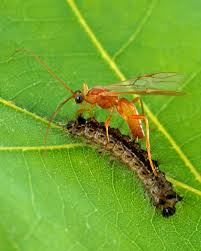
Now we will be looking at a type of wasps that is known as the parasitic wasp. This wasp is also a good guy that feeds on the bad guys which of course is the bad guys. The amazing thing about this is that these, wasps dose something rather strange than other insects.
Whereas other insects lay their eggs on the leaves or plant parts this insect injects its eggs inside of the body of the host insect (other insects) or lays their eggs on them. As the nymphs hatch, it begins to eat or feed on the inside of the host insect.
That means that while the host insect is still alive it’s being us as food for the nymphs. As the nymphs mature continue to feed on the inside of the host insect. Once the nymphs reach maturity they emerge from the host insect by this time the host insect is dead.
You can sometimes see the evidence of this, once examine carefully you will see a tiny hole inside of the host insect this is where the fully grown wasps emerge. A host insect, for example, can be a caterpillar in which the female parasitic wasps injects its eggs.
Most of these wasps are small to medium. And are brown or black. Some can also be bright orange or metallic blue. Also, the parasitic wasp is used in agriculture as biological control. This is a safe method of growing crops. without the use of chemicals.
Now on to the bad bugs
Birch leafminers
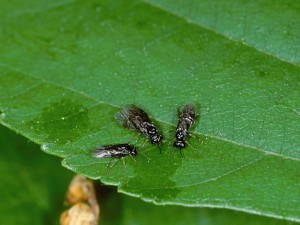
Birch leaf miner is a bad bug that causes damage to plant life. The leaves of a plant that is infected by these miners have a light green or grey spot. This discoloration of the leaves happens because this is the area where the female miner had laid her eggs.
When eggs hatch the larva begins to feed on the leaves causing more damage. The leaves then begin to take on a different appearance this time brown blotches appear. As the larva continues to feed on the leaves the blotches begin to spread.
The female miners lay eggs around the midrib area of the leaves,
The larva hatches from eggs during the first part of June and feeds on the leaves tissue, the mature larva emerges from the leaves the latter part of June to early July and falls to the earth’s surface.
Where they pupate. Two weeks later they emerge as adults and the life cycle continues. The adult miners are black and the larva is whitish in appearance.
Gypsum Moth
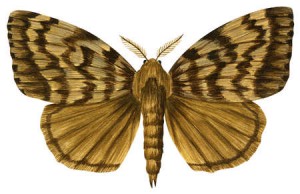
This moth is very destructive in that it feeds on many host plants. The gypsum moth may be beautiful but it causes a lot of damage to plant life. The eggs of these moths are laid in summer and hatch the following spring. The gypsum moth eggs are about the size of a quarter! Pretty big I would say for an insect.
The female moth lays her eggs just about anywhere: tree logs, chairs, wheels, old tires, large rocks, old pieces of furniture, and so on. Talk about wanting to drop that load!
When the eggs hatch the larva emerges and feeds on plant leaves. After a few months, the larva then develops into a pupa. The pupa inside of the cocoon begins to develop and grow. After a few short weeks, a moth emerges.
The adult male is light to dark brown with black bands on its forewings. The female moths are white with brown markings on her wings.
Scale insects

There are many species of scale insects worldwide. These insects can also cause damage to plant life. Scales can be found in great masses in a fixed or unmovable state on garden plants. These insects are sucking insects and suck the sap from the plant.
Scales can also be found on plants that are being grown in plant nurseries, these insects are widespread. Because these are sucking insects, they attract ants in search of their excrement which is a sugary substance known as honeydew.
Their excrement can also cause your plants to be covered with a black substance known as sooty mold that grows on the plant because of their excrement. Sooty mold causes the plant to look sickly.
Also, sooty mold can interfere with the way plants manufacture their food in the process we know as photosynthesis. By this, we can see what great trouble these small insects can create. The eggs are laid under the protection of the scale’s shell.
The adults remain stationary while the nymphs move about actively over the plant surface seeking to cause damage
Colorado Potato Beetle
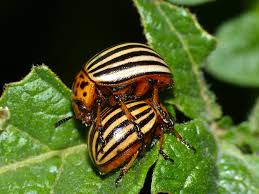
Colorado potato beetle causes damage to potatoes, tomatoes, and eggplants. Eggs are laid on the underside of the potato leaves. This beetle which is black with yellow stripes feeds on the leaves of the potato. When the weather gets cold the beetle will seek out shelter in the soil.
The females can lay up to about 400 or more eggs in a 4-6 week period. The eggs are laid in batches and hatch in about 4-9 days’ time then the larva begins to feed on the potato leaves. The mature larva burrows into the ground to pupate in 5-10 days.
After this time period, the beetle emerges as an adult.
Crucifer Flea Beetle
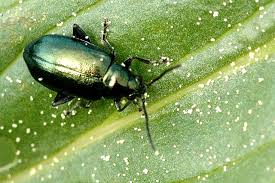
Crucifer flea beetle feeds on crops and can do extensive damage if not brought under control. Damages can amount to millions of dollars of crops. The adults burrow in the soil and leaf litter during the cold weather. In the spring they become active. Mating begins and the female beetle lays her eggs in the soil next to the host plant.
The eggs of the female beetle hatch in about 5 days’ time as the larva feeds on plant roots in the soil. The larva undergoes 3 stages and then pupates in the soil. Mature beetles emerge from the soil and begin feeding and seeking shelter from the cold weather that is just ahead of them.
Development from eggs to adults takes about 7 weeks.
Mealybugs
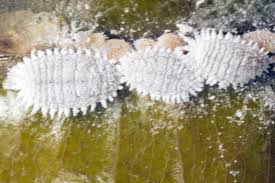
Mealybugs are insects that are covered in a white cottony wax coating. Mealybugs move very slowly on the host plant. They belong to the sucking insect family. Mealybugs cause the leaves to turn yellow then brown. After a while, the leaves fall from the plant onto the ground.
What makes matters worse is the excrement of the mealybugs attracts ants that cause sooty mold to form on the leaf surface. As a result, the plant begins to look unattractive. If there is a great build-up of sooty mold, it will interfere with the plant’s ability to make its own food.
The excrement of the mealybug is a sugary substance the ant harvest for food. Mealybugs can be found in the landscape and gardens, in plant nurseries, and also on indoor plants. Make sure that your plants are in good condition as far as watering along with proper care to help ward off mealy bugs.
Mealybugs attack a wide variety of plants including croton, vines, hibiscus, and a whole host of other plants.
To learn more about control methods click on this link mealy bugs control methods;
Aphids
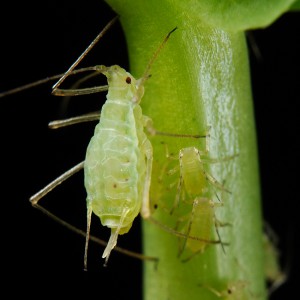
Aphids are tiny insects that are either white, brown, grey, yellow, or light green with a pear-shaped body. These insects suck the juice from the plant leaves causing discoloration and leaf drop. Leaves that have been infected by these insects curl up and grow stunted.
Aphids like mealy bugs also secrete honeydew as their excrement which attracts ants and causes sooty mold to appear on the leaf’s surface. The females lay eggs in the crevices of the twigs of the plant.
Within several days of being laid, the nymphs emerge. Nymphs are greenish but turn yellow as they mature. Aphids love to feed on the tender shoots of the host plants, flowers, fruit trees, and shrubs. I have also seen them in herb and vegetable gardens.
For further information to control Aphids see control methods.
Whiteflies
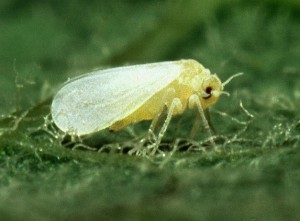
Whiteflies are tiny white insects that can cause serious damage to plant life. There was a time when our region experienced a serious outbreak of these pests that caused extensive damage to the Ficus Benjamina to the point that local plant nurseries began to give out instructions on how to control this insect.
It was a three-part instruction that I myself implemented to control these pests. Whiteflies suck the plant juices causing yellowing of leaves and leaf drop. Because they are sucking insects they also do what other sucking insects do. To find out more about whiteflies, read the section that deals with mealybugs and aphids.
Eggs are laid on the underside of the leaves and hatch in about eight days. Their nymphs go through four stages. Most species can complete a life cycle in about 20 to 30 days.
They can usually be located on the underside of the leaves. When the leaves are shaken they will begin to fly and when you discontinue shaking the leaves they will attach themselves back to the leaves on the underside again.
For further control besides biological control see control methods.
Thrips

Thrips are sucking insects that cause leaf yellowing, twisted leaves, and leaf drop. These tiny insects can do serious damage to what seems to be a short time. I have dealt with these pests on many occasions and have seen the damage they cause. Their saliva is toxic to plants.
There are many species of thrips, their life cycle consists of egg, pupae, larva, and adult. The life cycle of thrips is completed in 11-25 days. Adults are straw-colored or black and have slender bodies.
For further control besides biological control see control methods.
Spider Mite
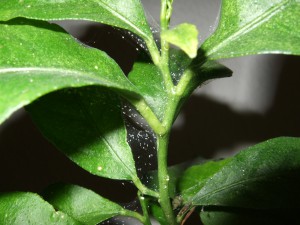
Spider mites are very tiny insects that reside on the underside of plant leaves. Plants that are infested with these insects normally have spider webs and take on a dusty greyish appearance. To see if you have spider mites place a sheet of white paper under the leaves.
Shakes the leaves and if there is spider mite infestation you will see tiny specks or spots moving around on the paper. You may even feel them crawling around on the surface of your skin. Their life-cycle consists of egg, larva, and two nymph stages.
For further control besides biological control see control methods.
About the author
Norman loves being in the garden, both at home and for his job....
he is 'Natures Little helper' being outdoors, growing his vegetables and flowers from an early age.
Now having spent over 22 years in the profession he want to give some of his knowledge to others...
his vast array of hints and tips you will find scattered over this site will help you no end growing plants in your garden.

Thanks billy for pointing out what you see. website is still under construction those errors will be corrected thanks again.